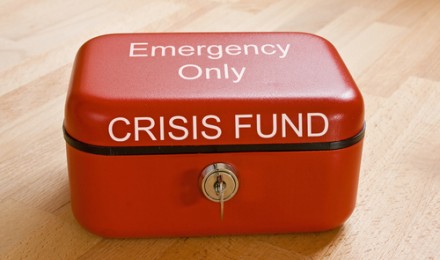When it comes to investing knowing what to do is half the battle. But all the knowledge in the world will not do you any good if you don’t take any action. Many people know about risk tolerance, rebalancing, places to invest, and the benefits of automated investing, we will look at just where to put money. After this there is no excuse to sit on the sidelines any longer.
Many people will take a risk tolerance questionnaire and come up in the conservative or moderately conservative allocation models. Without knowing how to build a conservative portfolio this means nothing. Basically speaking the more conservative an investor is, they will have less in equities (stocks) and more in fixed income (bonds). So a conservative investor may only have about 20% of their portfolio in stocks, the other 80% will be a mixture of bonds, and other less volatile investments. By taking less risk in their portfolio the conservative investor will naturally experience lower returns. However, by keeping some equities, rather than going to 100% bonds, the investor will actually take less risk, and experience greater returns. This is part of the modern portfolio theory called the efficient frontier.
Every portfolio will need at least some stocks to help capture the growth the stock market experiences in good years. In fact, during the last 30 years, the S&P 500 Index average just over 10% per year. To offset the volatility in the stock market and provide income, a good portion of bonds should be used. For consistent returns, there should be a mix of commodities mixed in as well. So for those who are conservative, they will want to look at a portfolio that is 20% equities and 80% bonds. Rather than choosing individual stocks or bonds, you want to invest in low-cost, passively-managed mutual funds that track the US stock market and the US bond market. By getting into the right allocation, you can be comfortable your investments will work hard for you.
In order to take a lot of the stress out of investing, the investor should look at using high quality mutual funds. This means choosing a good fund company, and picking the funds that have good history and a good Morningstar rating. Those who are investing in retirement accounts have it even easier. Rather than go through the trouble of building their own portfolio, many mutual fund companies now offer target date funds. The investor simply needs to pick the date closest to when he or she plans to retire, and the fund adjusts the allocation automatically.
Too often, however, people put their money into a certain allocation and just leave it. Since stocks grow at a faster pace than bonds, regular rebalancing is necessary. This will keep the equities portion of the portfolio at 20% instead of watching it grow, moving the investor away from a conservative portfolio and closer to a balanced one.
When it comes to investing knowing what to do is half the battle. But all the knowledge in the world will not do you any good if you don’t take any action. Many people know about risk tolerance, rebalancing, places to invest, and the benefits of automated investing, we will look at just where to put money. After this there is no excuse to sit on the sidelines any longer.
Many people will take a risk tolerance questionnaire and come up in the conservative or moderately conservative allocation models. Without knowing how to build a conservative portfolio this means nothing. Basically speaking the more conservative an investor is, they will have less in equities (stocks) and more in fixed income (bonds). So a conservative investor may only have about 20% of their portfolio in stocks, the other 80% will be a mixture of bonds, and other less volatile investments. By taking less risk in their portfolio the conservative investor will naturally experience lower returns. However, by keeping some equities, rather than going to 100% bonds, the investor will actually take less risk, and experience greater returns. This is part of the modern portfolio theory called the efficient frontier.
Every portfolio will need at least some stocks to help capture the growth the stock market experiences in good years. In fact, during the last 30 years, the S&P 500 Index average just over 10% per year. To offset the volatility in the stock market and provide income, a good portion of bonds should be used. For consistent returns, there should be a mix of commodities mixed in as well. So for those who are conservative, they will want to look at a portfolio that is 20% equities and 80% bonds. Rather than choosing individual stocks or bonds, you want to invest in low-cost, passively-managed mutual funds that track the US stock market and the US bond market. By getting into the right allocation, you can be comfortable your investments will work hard for you.
In order to take a lot of the stress out of investing, the investor should look at using high quality mutual funds. This means choosing a good fund company, and picking the funds that have good history and a good Morningstar rating. Those who are investing in retirement accounts have it even easier. Rather than go through the trouble of building their own portfolio, many mutual fund companies now offer target date funds. The investor simply needs to pick the date closest to when he or she plans to retire, and the fund adjusts the allocation automatically.
Too often, however, people put their money into a certain allocation and just leave it. Since stocks grow at a faster pace than bonds, regular rebalancing is necessary. This will keep the equities portion of the portfolio at 20% instead of watching it grow, moving the investor away from a conservative portfolio and closer to a balanced one.







